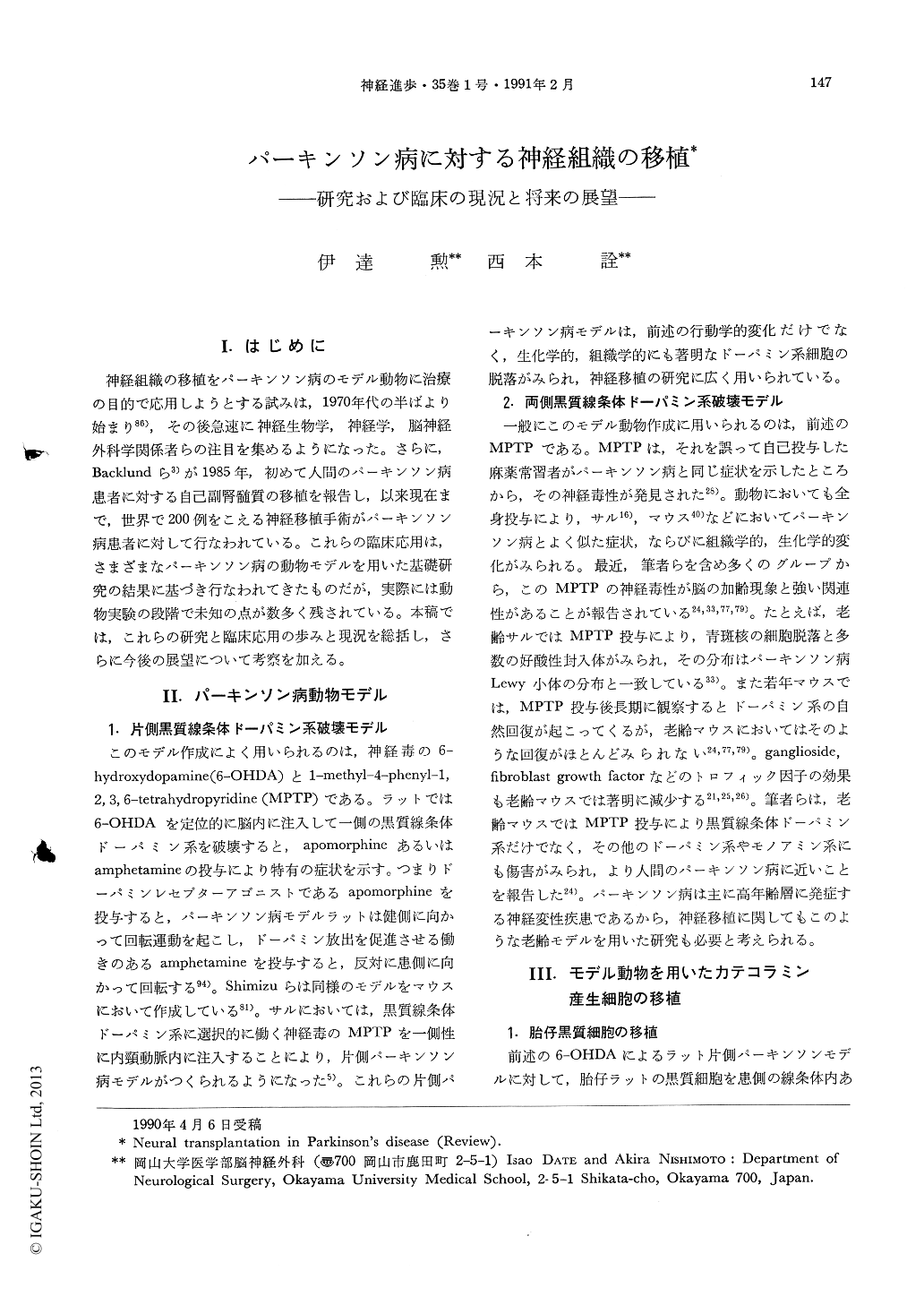Japanese
English
- 有料閲覧
- Abstract 文献概要
- 1ページ目 Look Inside
I.はじめに
神経組織の移植をパーキンソン病のモデル動物に治療の目的で応用しようとする試みは,1970年代の半ばより始まり86),その後急速に神経生物学,神経学,脳神経外科学関係者らの注目を集めるようになった。さらに,Backlundら3)が1985年,初めて人間のパーキンソン病患者に対する自己副腎髄質の移植を報告し,以来現在まで,世界で200例をこえる神経移植手術がパーキンソン病患者に対して行なわれている。これらの臨床応用は,さまざまなパーキンソン病の動物モデルを用いた基礎研究の結果に基づき行なわれてきたものだが,実際には動物実験の段階で未知の点が数多く残されている。本稿では,これらの研究と臨床応用の歩みと現況を総括し,さらに今後の展望について考察を加える。
Attempts to use neural transplantation for the treatment of experimental Parkinson's disease started more than a decade ago and considerable attention has focused on the numerous clinical trials in patients afflicted with Parkinson's disease over the past several years. Although these clinical trials evolved from basic science research using various kinds of parkinsonian animal models, many questions remain to be addressed at the stage of animal experiments. Basd on our experience with brain grafts especially from the point of host intrinsic dopaminergic fiber recovery following grafts and immunological reaction, this review highlights major developments in the field of neural transplantation to the animal models of parkinsonism and summarizes the data concerning the clinical trials for the patients of Parkinson's disease. We refer to the development of parkinsonian animal models using 6-hydroxydopamine (6-OHDA) or 1-methyl-4-phenyl-1, 2, 3, 6-tetrahydropyridine (MPTP), advantage and disadvantage of adrenal medulla and fetal substantia nigra as donor tissues, and mechanism of functional recovery following transplantation. We also address the issues which should be resolved before the more widespread usage of this approach to the patients with Parkinson's disease.

Copyright © 1991, Igaku-Shoin Ltd. All rights reserved.


